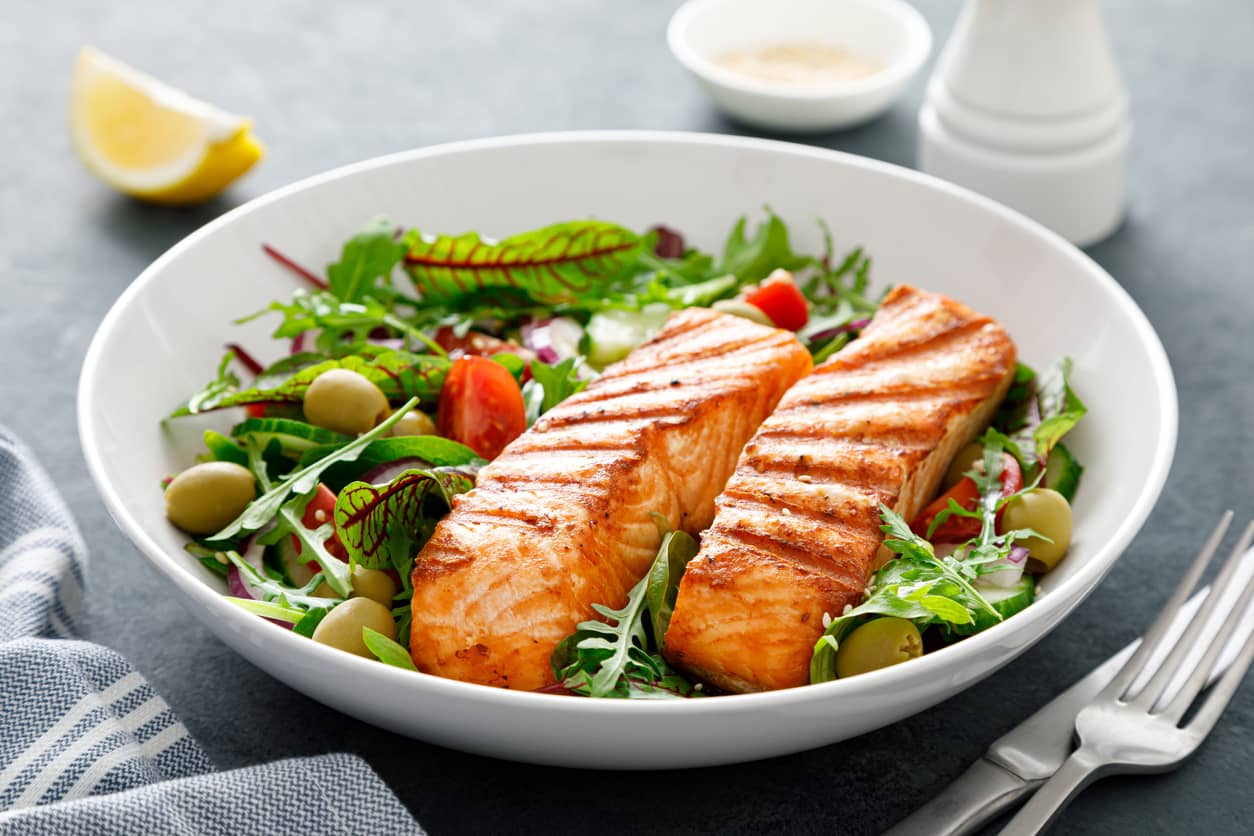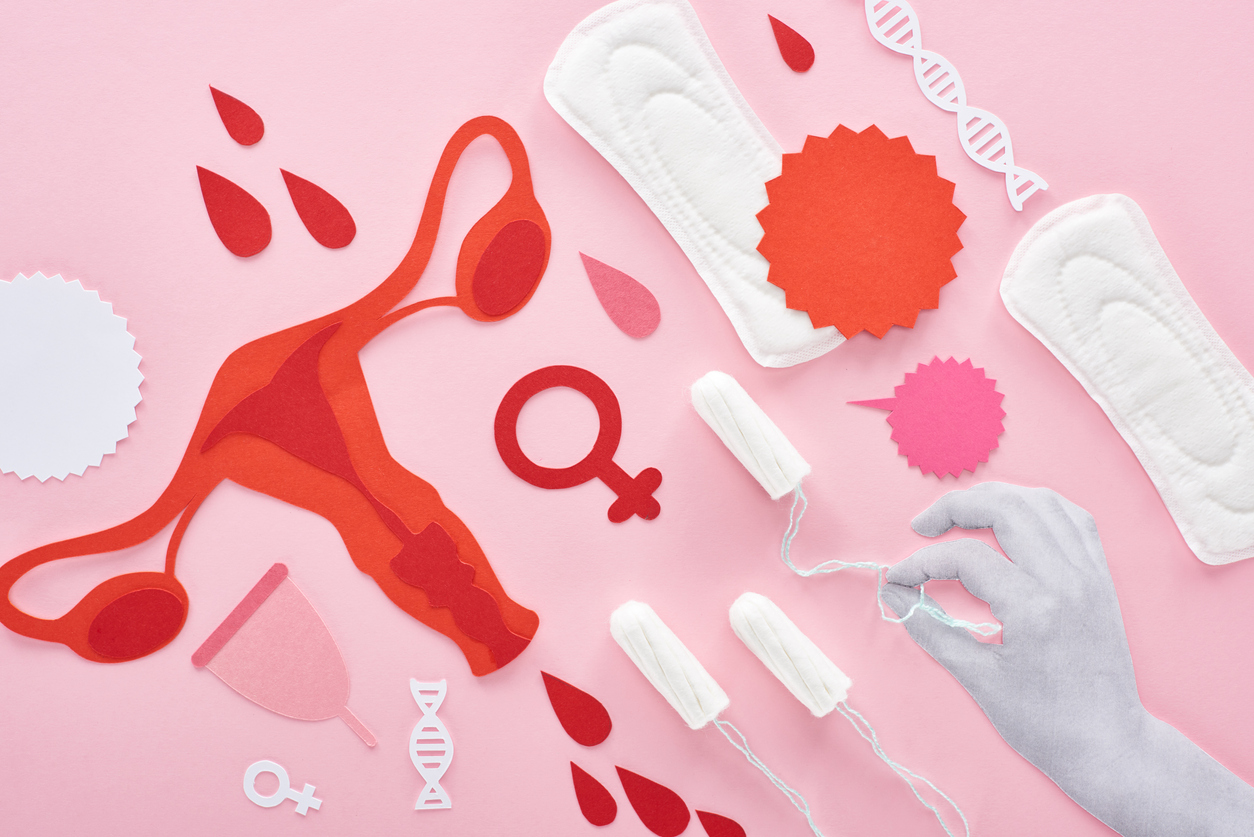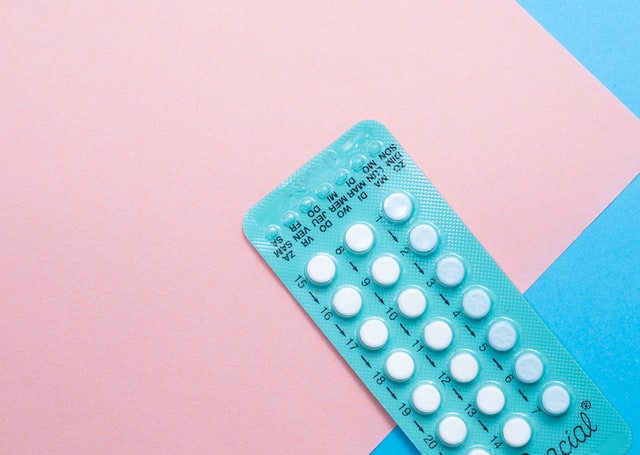Feeling short tempered and snappy, having to use your ‘PMS bra’ because you get breast pain, bloating so much you feel sluggish, finding you have sleep problems and food cravings you can’t get rid of – these are just some of the symptoms of premenstrual syndrome (PMS), which you may already know too well.
PMS is the medical name for the collection of physical, psychological and behavioural symptoms that can affect you in the lead-up to your monthly period.
Up to 9 out of 10 women get some symptoms before their period. But to be diagnosed with PMS, your symptoms need to have a significant impact on your daily life.
At its worst, PMS can feel like it’s ruling your life, taking over your body and mind. But thankfully, there are lots of science-backed ways to help you to deal with it. Here’s what you need to know.
What is PMS?
Most women say they’ve had to deal with premenstrual symptoms at some point, so you’re certainly not alone if you get them. They’re so common that for many women, they’re a ‘normal’ part of their periods – but that doesn’t mean you can’t do something about them.
The type of PMS symptoms you get can vary, as can how severe they are. According to studies, between 3 and 30 out of 100 women report severe PMS symptoms.
There are more than 150 symptoms that can be associated with PMS – but you might only get a few of them.
The types of symptoms you can get fall into 3 main groups:
- physical – such as bloating and breast pain
- psychological – such as mood swings and anxiety
- behavioural – such as lack of concentration and aggression
The most common PMS symptoms include:
- mood swings
- tiredness
- sore breasts
- headaches
- bloating or tummy (abdominal) pain
- feeling irritable, anxious or upset
- spots (acne)
- greasy hair
- feeling more hungry (increased appetite)
If you have another health condition, you might also notice it gets worse when you have PMS. Affected conditions include allergies, migraines, asthma, sleep disorders and gut issues like constipation and bloating.
Coping with PMS symptoms can sometimes feel overwhelming. You may need to take time off work, or opt out of socialising for a few days. It can also be hard for your partner and family to understand what you’re going through.
What causes PMS?
The causes of PMS aren’t fully understood, but it may involve:
- the effects of oestrogen and progesterone on brain chemicals – changing levels of these hormones during your cycle can affect the ‘feel-good’ chemical serotonin, involved in mood and sleep, and a chemical called GABA, which has a calming effect and helps you cope with stress. Low levels of both may affect your mood
- sensitivity to progesterone – studies have shown that people who get PMS don’t have different hormone levels from people who don’t get PMS. So it’s thought that some women may just be more sensitive to progesterone than others – but we don’t know why
- changes in other hormones – fluctuations in oestrogen and progesterone can also affect other hormones, such as aldosterone, which helps regulate your water balance, so this may lead to symptoms such as water retention and bloating
How to recognise the signs of PMS
Like most things in life, PMS symptoms affect people differently. But they generally happen any time in the 10-16 days before the start of your period, after you’ve released an egg (ovulation).
They usually go away once your period starts, or a few days later. You then have a week or 2 with no symptoms. After a while, you may start to recognise a pattern with your symptoms, as they tend to happen around the same time every month.
It’s worth noting that PMS sometimes gets confused with depression. The 2 conditions have some common symptoms, including mood changes and anxiety. So if you’re having lasting or severe psychological or behavioural symptoms, it’s possible that these are symptoms of depression.
If you still aren’t sure what’s going on for you, try using our Smart Symptom Checker to work out what you might need to talk to your doctor about.
How do I know if I have PMS?
You may have PMS if:
- your symptoms happen in the week or 2 before your period
- they affect your day-to-day life
- your symptoms improve once your period starts
There's no specific test for PMS, but your doctor can usually diagnose it by reviewing your medical history and symptoms. They’ll ask about what symptoms you have and how they impact your work, social life and relationships. They’ll also want to know about any medication you’re taking, including non-prescription medicines or supplements.
They may ask you to keep a symptom diary for 2 or 3 cycles – or you could set up trackers on the Healthily self-care app.
In some cases, your doctor may recommend tests to rule out other conditions, particularly if you’re getting symptoms throughout your cycle. Conditions that have some of the same symptoms as PMS include irritable bowel syndrome (IBS), anaemia, endometriosis, depression, thyroid problems, fibroids and polycystic ovary syndrome (PCOS).
If you’re worried about your symptoms, try our Smart Symptom Checker to help you work out whether you should see a doctor. Read about when to see a doctor about PMS.
What is PMDD?
While many people only get PMS symptoms for a few days before the start of their period, they can make life very difficult for some people.
Severe PMS is called premenstrual dysphoric disorder (PMDD), and is thought to affect around 1 to 10 out of 100 women.
The symptoms are similar to PMS, but are much more intense. PMDD symptoms can also include:
- cramps, headaches and joint and muscle pain
- binge-eating and sleep problems
- feeling very angry, anxious, depressed (in some cases, even suicidal)
How do I know if I have PMDD?
You can be diagnosed with PMDD if:
- you have at least 5 psychological premenstrual symptoms – including 1 related to mood
- you get these symptoms in the second half of your cycle (after ovulation)
- your symptoms disrupt your daily life
How do you treat PMS?
You don’t have to ‘just put up with’ PMS – lifestyle changes, self-care techniques, and medical treatments and support are all available.
Bear in mind, however, that you may not find the solution right away. You may need to be proactive and work with your doctor, and try various things until you find what works for you.
Lifestyle changes to help manage PMS
1. Pay attention to your diet
Eating a healthy, balanced diet is not only good for your overall health, but it may also help you manage PMS symptoms.
With PMS, it can be helpful to eat small meals every 2 or 3 hours, which are rich in complex carbohydrates – such as wholegrains, beans, vegetables and brown rice. Unlike refined, ‘white’ carbohydrates (such as white bread and pizza), complex carbs release their energy more slowly, helping you avoid sugar highs and lows – which can affect your mood and food cravings. It’s best to limit your intake of refined carbs and sugar for the same reason.
Try to include the following foods in your diet to help with PMS:
- green, leafy vegetables – these are a rich source of magnesium, which women with PMS are often lacking
- 2 portions of oily fish a week – the omega-3 fatty acids they contain may improve PMS mood symptoms. Try salmon, mackerel or sardines (or linseed or pumpkin seeds if you don’t eat fish)
- fortified breakfast cereals, nuts and legumes – these contain vitamin B1, which is often low in women with PMS. Aim for 2 to 3 servings a day
- cow’s milk, soya milk, red meat and green vegetables – these all contain vitamin B2, and low levels are associated with a higher risk of PMS. Aim for 6 or 7 servings a day (but limit red meat to no more than 3 portions a week)
- low-fat dairy products such as milk, cheese and yogurt – these all contain calcium, and studies show that women who eat calcium-rich foods are less likely to get PMS. Aim for 4 servings a day
Try to cut back on:
- caffeinated drinks – including tea, coffee and cola. High intakes have been linked to PMS symptoms
- salt – too much may sometimes make water retention worse. Your recommended maximum daily intake is 6g, or about 1 teaspoon

2. Get active
Like eating a healthy diet, staying active is good for your overall health. And when it comes to managing PMS symptoms, some studies have found that aerobic exercise may be particularly helpful – but any type of exercise is likely to be better than nothing. You really might not feel like exercising if you’re bloating and have breast pain, but even a walk can really help. Just make sure you feel comfortable in your clothes, focus on how much better you’ll feel after you’ve done it and see if you can step out there.
Exercise can also help to improve your mood by releasing ‘feel-good’ hormones called endorphins and reducing stress levels.
So why not try:
- exercise to relieve stress and lift your mood – such as brisk walking, running, exercise classes or swimming. Read about how to make exercise a daily habit
- yoga for mood and relaxation – some research shows that women who practise yoga see an improvement in their PMS symptoms. It’s thought that yoga has positive effects on brain activity, associated with feelings of peace, improved mood and relaxation. (Read about whether yoga can help with anxiety and depression)
3. Stick to a good sleep routine
Poor sleep is a common PMS symptom, and research suggests that women generally have more disturbed sleep than men. It’s thought that fluctuating hormones may be to blame for this.
Getting into healthy habits with your bedtime routine can help to boost your chances of getting a good night’s sleep and break the vicious circle of disturbed sleep.
Try to:
- stick to a regular bedtime to train your body clock – getting up at the same time every day can also help
- make sure your bedroom is quiet, dark and cool
- make your bedroom a tech-free zone – phones and other devices can increase your alertness and make it harder for your body to ‘switch off’ for sleep
- avoid drinking caffeinated drinks close to bedtime
Read more tips to improve your quality of sleep.
4. Don’t smoke
Smoking is linked with worsening PMS symptoms, because nicotine can affect your brain chemicals and disrupt hormone production. Read more about quitting smoking.
5. Cut down on alcohol
Drinking alcohol is also associated with PMS. A review of several studies found that women who drink are 45% more likely to get PMS symptoms than those who don’t. This figure rose to 79% for heavy drinkers.
More research is needed to work out if alcohol actually increases the risk of PMS – and if so, why. One theory is that alcohol may affect some of the hormones involved in your menstrual cycle.
You may want to try cutting down or giving up alcohol to see if it makes any difference to your symptoms. Read more about alcohol guidelines.

Medication and medical treatments for PMS symptoms
Medical treatments can be used to help manage some of the symptoms of PMS. Options include:
- painkillers – simple painkillers such as ibuprofen and paracetamol are available without prescription and can be used for PMS symptoms such as breast pain, headaches and general aches and pains. Some people find one works better than the other, depending on the type of pain and where it’s located
- combined contraceptive pill – the combined pill contains both oestrogen and progesterone, and has been found to reduce PMS symptoms. Certain types may be particularly effective (speak to your doctor for advice)
- intrauterine system (IUS) – this contraceptive device contains progesterone and has also been shown to reduce the physical symptoms of PMS
- cognitive behavioural therapy (CBT) – this ‘talking therapy’ aims to change the way you think and act. It can be used to treat PMS symptoms such as stress, anxiety and depression
- antidepressants – if you have severe PMS, your doctor may prescribe a 3-month trial of selective serotonin reuptake inhibitors (SSRIs), such as citalopram, sertraline or fluoxetine. These can be taken all the time, or just in the second half of your cycle
- GnRH analogue injections – used for severe PMS, these injections can stop or reduce your periods by reducing your levels of oestrogen. In some cases, your doctor may recommend a 3-month trial to help with a PMS diagnosis
Can complementary therapies help manage PMS?
There’s some limited evidence that complementary therapies may help manage PMS. It’s best to check with your doctor or pharmacist before trying anything new, including the following:
- acupuncture or acupressure – a review of 5 trials concluded that acupuncture or acupressure may improve physical and psychological PMS symptoms. But as the sample sizes were small, more research is needed
- reflexology – a review of 9 studies found that reflexology may reduce some PMS symptoms, as well as help sleep

Can vitamins, minerals and herbal remedies help PMS?
Calcium and vitamin D supplements
There’s some evidence that taking a calcium and vitamin D supplement – or eating a diet rich in both – can stop or reduce some PMS symptoms. Both calcium and vitamin D are involved in the regulation of hormone levels, as well as brain chemicals that affect mood.
There’s no recommended supplement dose for PMS, but the NHS says 1,500mg of calcium a day is unlikely to cause any harm. For vitamin D, 10mcg a day is recommended during the autumn and winter months in the UK.
Vitamin B6 and magnesium
Like calcium and vitamin D, vitamin B6 and magnesium are thought to be involved in hormone and brain chemical regulation, which is linked to PMS.
A number of studies have suggested that vitamin B6 may reduce PMS symptoms, although good-quality evidence of its effectiveness is limited. In 1 study, taking vitamin B6 and magnesium together was shown to reduce PMS symptoms.
It’s recommended that you don’t take more than 10mg of vitamin B6 a day unless your doctor advises it. Taking up to 400mg a day of magnesium is unlikely to cause harm, but higher doses can cause diarrhoea.
Vitex agnus-castus
Also known as chaste tree or chasteberry, vitex agnus-castus is a plant used in herbal medicine. It’s been shown to reduce oestrogen levels and increase progesterone levels, so the theory is that this could help with PMS symptoms.
A review of trials found that vitex agnus-castus may well help with PMS, but more good-quality research and bigger studies are needed before we can be sure of its effectiveness.
Ginkgo biloba
Extracted from ginkgo trees, ginkgo biloba has a long history of use in traditional Chinese medicine, and there’s limited evidence from studies that it may reduce the severity of PMS symptoms. But more research is needed to check its safety and effectiveness.
When to see a doctor
Many women with PMS don’t ask for help. You may think that PMS is ‘normal’ for you, and that you just need to cope with it on your own. But support does exist.
You should see your doctor if your PMS symptoms are having a big impact on your life, particularly if lifestyle changes and self-help measures haven’t helped.
Severe symptoms and PMDD can have a serious effect on your mental health, and may even lead to thoughts of self-harm. If you feel this way, get emergency medical help or contact a suicide support group – such as the Samaritans in the UK.
You should a doctor as soon as possible if have have these symptoms and they don’t go away or you get them often:
- bloating
- feeling full easily
- loss of appetite
- tummy or pelvic pain
- needing to pee more often or urgently
- feeling very tired
- changes in your poo (bowel) habits
You should also see a doctor as soon as possible if you’re:
- losing weight without meaning to
- getting PMS symptoms throughout your cycle
If lifestyle changes or other PMS treatments don’t work, or your doctor thinks another health condition could be causing your symptoms, they may recommend some tests or refer you to a specialist in reproductive health (gynaecologist).
Where else to get support if you need it
Your doctor should be your partner in finding the right way to manage your PMS symptoms. Friends and family can offer support, too, and you can also try the following:
- National Association for Premenstrual Syndromes (NAPS) – a UK charity that supports women with PMS and PMDD (also on Facebook)
- UK PMDD Support – a Facebook group for women with PMDD
- International Association for Premenstrual Disorders (IAPMD) – a global network for people with PMS and PMDD
- You and Your Hormones – an educational resource from the Society for Endocrinology
- Find NHS therapy and counselling services in England
- Watch Laura’s PMDD story, as told to the mental health charity Mind
Your health questions answered
Does evening primrose oil help with PMS?
“Evening primrose oil is a popular PMS remedy, which contains 2 types of omega-6 fatty acids. There’s evidence that it’s safe and that it might help with PMS, but the data is confined to a few small studies – evidence from larger, higher-quality trials is lacking. If you do decide to try it, it’s thought that it should be taken regularly for 4 to 6 months, as it can take a few months to take effect.”
Can I take St John’s Wort for PMS mood swings if I’m on the pill?
“St John’s Wort is a natural remedy that’s promoted as a treatment for depression. However, it can interact with the contraceptive pill and other types of contraception, making them less effective, so you shouldn’t take them together. Many experts also advise against taking St John’s Wort, as the active ingredient varies between brands and it isn’t standardised in its strength. It can also interact with some other medications, including antidepressants, epilepsy drugs (anticonvulsants) and blood thinners (anticoagulants).”






